Sighting Boards
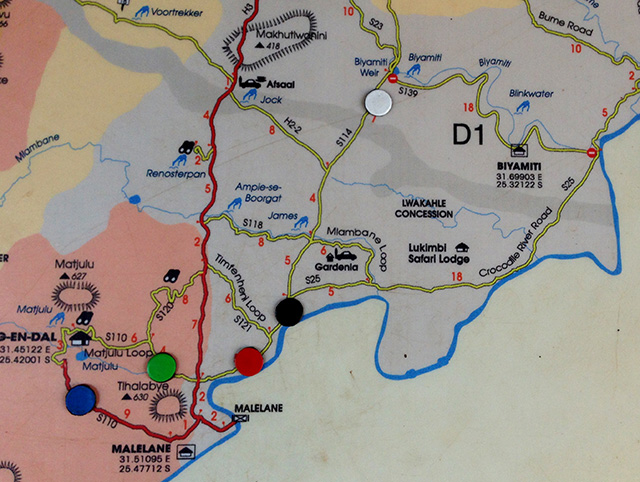
We will show you how to use sighting boards in order to help you find those elusive animals.
The Kruger Park...
...has sightings boards (pins or magnets), sighting books, and / or chalk boards – depending on which camp you are in.
The majority of camps have Yesterday's sightings...
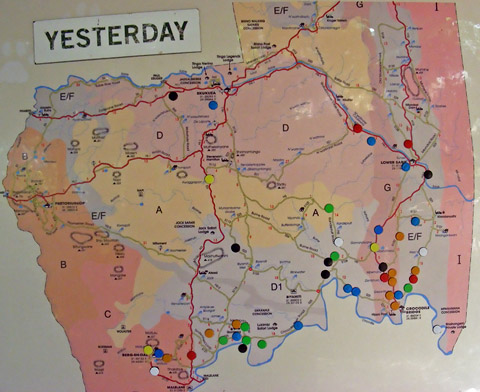
that you can compare with Today's sightings...
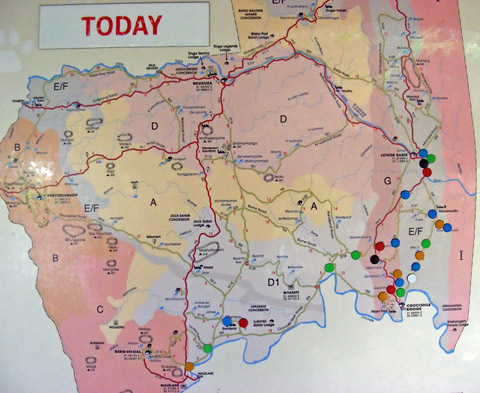
to better plan your game drive routes.
Some camps have more than one sighting board - Letaba camp, for example, has a magnetic board at the Elephant Hall, a sighting book and magnetic board at the reception and a tea-towel map at the shop...
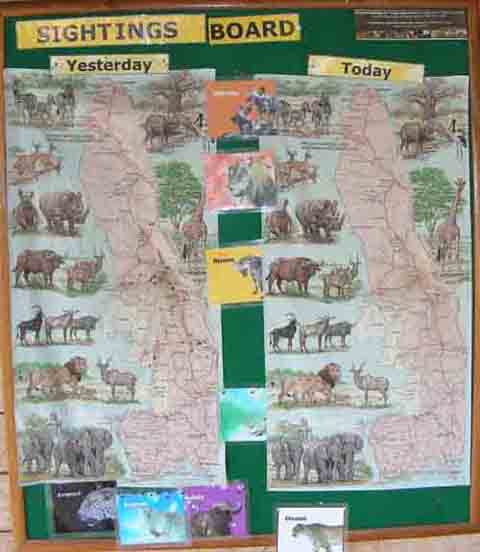
The old tea-towel game sighting map at Letaba camp shop has, however, been replaced with a new big-five map that is different to all the other camp and gate sighting boards...
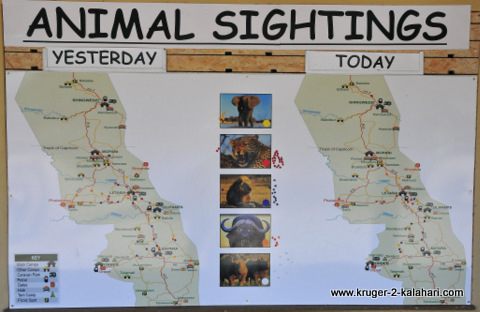
This was their opportunity to replace the old tea-towel sighting board with the same one that is used in ALL the other camps but instead they decide on this one that contains, not the super-seven animals, but just the big five.
Their pin colors are also different - all the other camps have lions as red and leopards as yellow but here lions are blue and leopards are red - very confusing for visitors!
Mopani camp has a magnetic sighting board at reception plus sighting books for special regional species such as Roan and Sable Antelope plus a sighting pin-board outside the restaurant.
There are even sighting maps at each park entrance gate so when you arrive at the park you can get a feel for which route to take. Camps such as Berg-en-Dal, Satara, Shingwedzi and the five bush camps have chalk boards in addition to magnetic boards and books.
These chalk board are primarily used by the game rangers to list species seen on morning and sunset drives.
There are two sighting maps on each board – one has yesterday’s sightings and the other today’s sightings. The next morning one of the staff members simply switches the two signs around and removes the today pins so if you are the first person at the board you see yesterday’s sightings and you have a blank map for today.
The Kruger Park initially put up the tea-towel maps over cork boards and visitors would use pins to mark their sighting of the big-5 animals. These tea-towels would get tatty and full of holes within a few years so they recently progressed to magnetic sighting boards, donated by TotalGaz.
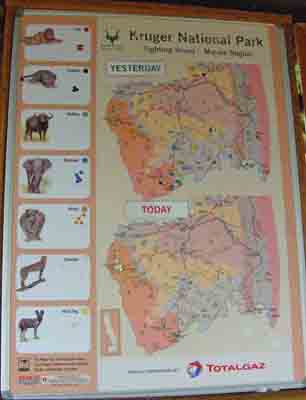
Southern region (Marula) game sighting board in Kruger National Park.
The new sighting boards are maps of the three Kruger regions, containing index photographs of the seven key species with corresponding colored markers of the original big-five plus cheetah and wild dog, collectively known as Africa's Super-Seven: Leopard (black marker)
Lion (red marker)
Buffalo (green marker)
Rhino (orange marker)
Elephant (blue marker)
Cheetah (white marker)
Wild dog (yellow marker)
Each camp should keep the same colors for each animal – most do but a few use other colors so it can be confusing but each map does have a legend. Visitors then indicate on the map where they spotted these animals.
These new magnetic boards will last longer and look better than the old pin maps but they suffer the same problem in that the magnetic markers go missing (do people actually steal these items!?) and so people start taking markers from the yesterday map to populate their today sightings or removing other people’s markers for that day.
NOTE: Rhino markers are no longer used due to poachers using this information to try and locate the rhinos.
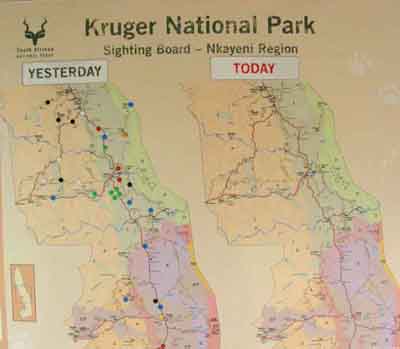
Central region (Nkayeni) sighting map. Another problem with these sighting boards is that some people don’t know exactly where they saw they animal so they guess when applying the marker. Some get cheetahs, leopards and servals confused, others get hyenas and wild dogs confused, while some even get warthogs and rhinos confused!
We learnt the hard way and when we went to see wild dogs only to find it was a hyena den.
We have even found that some people purposely put up incorrect markers to make visitors go down the wrong road – we are talking not just about kids but some adults as well.
The point we are making here is that the sighting boards are a good tool for visitors to use but you shouldn’t just rely on the boards, talking to people and just going with your gut-feel also can provide good results.
The one year we were at Lower Sabie and a chap walked up the board and put up a yellow wild dog marker along the main road to Crocodile Bridge camp. Now wild dogs can travel up to 50 kms in a day which means they could be long gone by now so we asked him if the dogs were on the move or resting and how far in the bush they were. He said they were right next to the road and they were resting as it was mid afternoon. We then took a chance and drove 20 kms down the main road and yes, the wild dogs were still there...
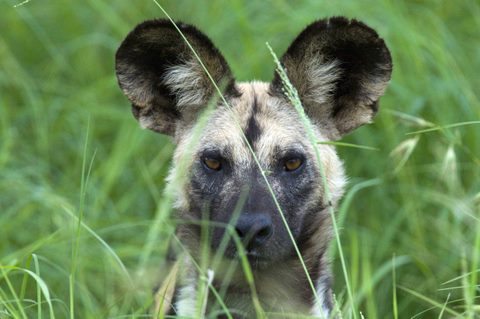
If he had told us that the dogs were on the move we would not have gone looking for them.
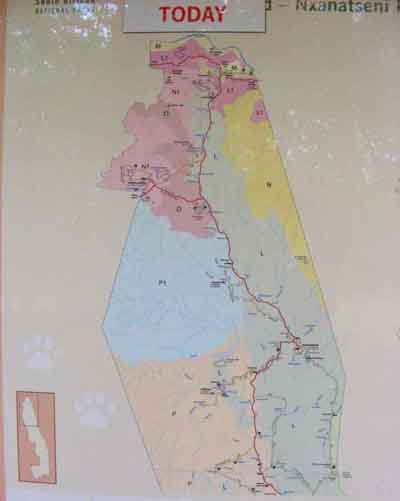
Northern region (Nxanatseni) sighting board.
On another occasion we were at Satara and saw one of the field guides returning from a morning drive – we asked him what he had seen and he told us they witnessed lions killing a zebra near Gudzani dam. We know that lions tend to stay put during the day as they rest and even more so if they have a kill so we traveled the 22 kms down the S100 to Gudzani dam and they were still there feasting on the carcass...
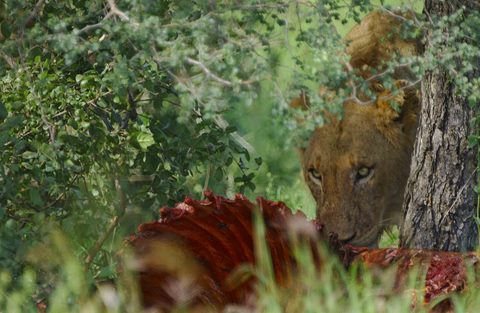
We also got some nice photographs of vultures and jackals at the carcass.
Keep in mind that most sightings tend to be fleeting – a leopard’s tail disappearing into the bush, a cheetah crossing the road or a lion lying in the shade under a tree 700 meters away. The sighting boards don’t guarantee you will see the animal but it tells you that the animal was in the area and it may still be there. You have a 50 – 50 chance of finding it. If you are staying for a few days in one camp the sighting board will start making more sense and should lead you to more game.
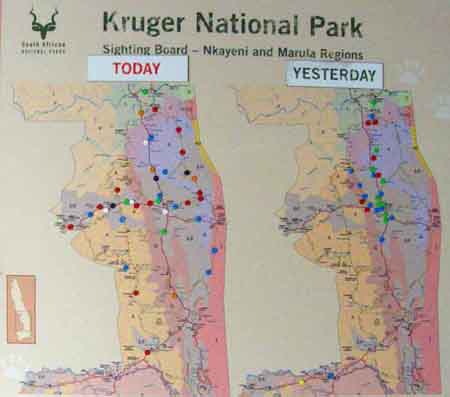
Looking at the Satara map above, you will see that most of the lions are still in the same area except they seem to have moved a bit west. You will also notice 3 cheetah pins on the Satara to Orpen road - these are three different people who saw the same cheetah. The day before there were no leopard sightings around Satara but 'today' there were three - each day in the park is totally different, which makes the experience so great.
When we stayed at Lower Sabie the one year we saw a leopard marker at the start of the S21 Nwatimhiri road, the next day it appeared a bit further down the road, the third day it was further still and the fourth day it appeared at the other end of the S21 – this showed that the leopard was travelling down the road following the river and visitors therefore had a very good chance of seeing it.
Another piece of advice is when to check out the boards and books. We have found that the best times are when you return from your morning drive – this will show you what you missed and you can then decide on your afternoon drive route and then again towards the end of the day so you can see where animals were last seen so you can plan your route for the next day.
What would be nice is if there were markers showing a KILL as opposed to just leopard, lion or cheetah sightings. This is because a kill means that the animals will most probably be there - if lions or leopards - for a few days providing you with a very good chance of seeing and photographing them. In addition there is the action, after the lions have feasted, of the vultures, jackals and hyenas feeding on the carcass for a few more days.
The one year we saw a few lion markers on the S39 each day and assumed they were the same lions moving down the road. On our last day at Olifants camp were travelling down to Skukuza so we decided to drive down the S39 to see if the lions were still around.
Just before Roodewaal camp we saw a giraffe carcass with vultures and hyenas. It was in an open area with great afternoon light - meaning that we missed a perfect photographic opportunity! The lions had made the kill on the Monday and we left Olifants on the Friday morning - five days of great photo opportunities. If the marker was a 'kill' marker we would not have missed this.
|
Should you wish to get the eBook, click on the book cover above, then click 'Add to Cart' where you'll see a button called 'Add Promo Code' - click on it then add the word K2K and the 33% discount will be automatically applied. This code is valid until the end of the month, so don't delay! |
"...the majority of images are really impressive, each chosen for a practical reason, sometimes annotated to stress a point. - Craig Rix, Editor,Travel Africa Magazine, UK 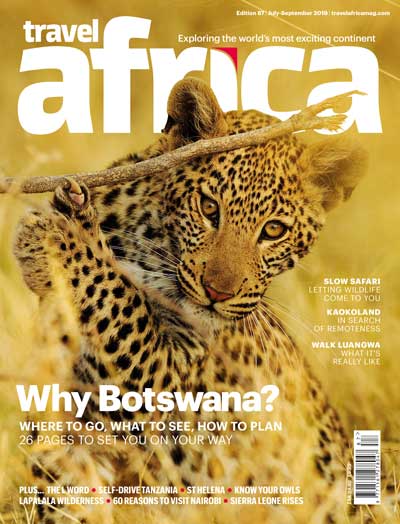 |
The Kgalagadi Transfrontier Park...
... has magnetic sighting boards at the three main camps – Twee Rivieren, Nossob and Mata Mata.


You'll notice that the animals to be found are the big cats plus other rarer animals such as caracal, honey badger, wild cat, brown hyena and even giraffe. (Giraffe are found only near Mata Mata and Urikaruus camps).
And there are sighting books at most of the wilderness camps like Kielie Krankie and Gharagab...
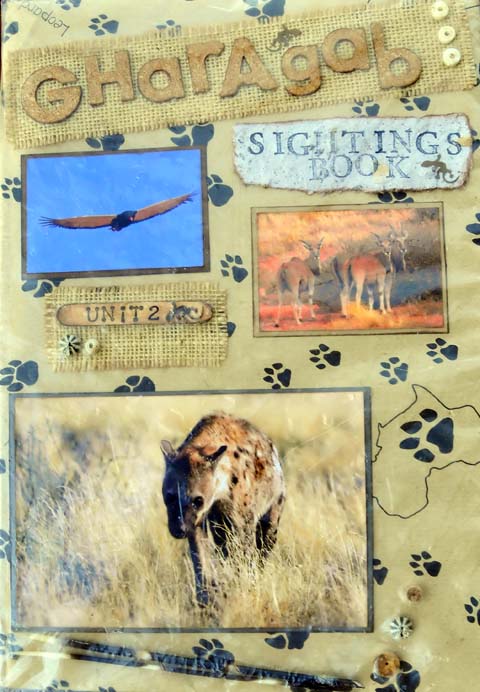
Etosha...
...has sighting books in the receptions at
Namutoni, Halali and
Okaukuejo.
Please click on image for a larger view...
The above page covers a 12-day period in Halali camp. You will see many lion, leopard, and black rhino sightings over these days.
The Pilanesberg...
...has progressed to an electronic sightings system called 'ParkView'. It can display historical sightings data for Today, Yesterday, the Last 2 days, Week, Month and Year for all species or a selected species.
In addition to visitors inputting their daily sightings all game drive sightings are remotely logged with a resulting delay of about 6 hours.
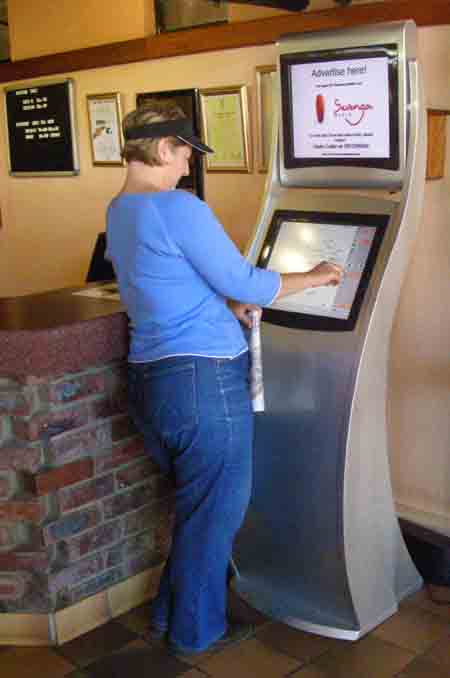
We initially struggled to find cheetah in the Pilanesberg but then decided to use ParkView. We saw that on Friday there was a cheetah sighting in the south west of the park.
When we arrived at the park on Saturday morning we entered in the south west at Bakubung gate and within a half hour had stumbled across the cheetah. It hopped onto one of the road signs in traditional cheetah fashion...
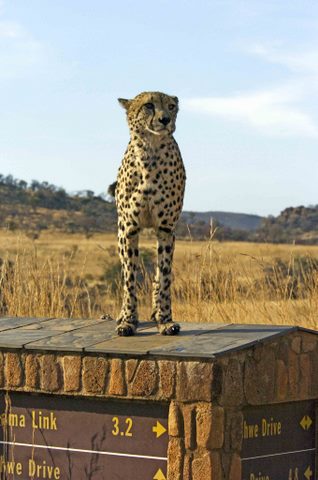
This system is very good! In the Kruger Park you are able to see yesterday's sightings on the pin-board and that's it. With a book, like in Etosha, you would have to page through it to try and find relevant sightings but with the ParkView (PV) terminal, you can see animal movements and patterns day by day and therefore find them much easier.
Some people have asked "What if people put in incorrect data - wrong animal or wrong area, as an example?" Well the same would apply with a map or book wouldn't it!
We have seen people removing or moving other people’s sighting pins on the sighting boards in the Kruger, whereas this cannot be done with PV. You input your sighting and there it stays! Every sighting tool will have a certain amount of error but ParkView would have the least error in our humble opinion.
Hans Meier, whose brain-child ParkView is, added a feature to PV that will prevent people fooling around by recording sightings out of the park or in areas where there are no roads.
In addition, sightings of the same species within 4 hours and within 1 kilometer of each other will also be rejected as this is most probably the same animal that has been seen by different people. This should ensure more accurate sightings data for visitors.
You can also check the PWT's (Pilanesberg Wildlife Trust) Facebook page each day for the latest sightings.
Currently there is a console at only Manyane, Bakubung and Kwa Maritane with future plans to have them at Sun City, Pilanesberg Center and other lodges.
There is 3G internet connectivity at all the lodges on the perimeter of the park so you could access the PWT website to check these daily sightings if your lodge doesn't have a console.
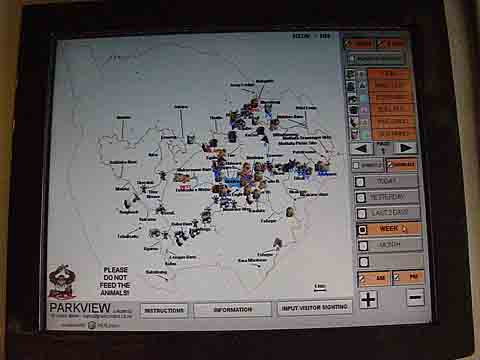
We were at
Olifants Camp in April 2009 and each day there were leopard markers only to the south of the camp. We thought that there must be leopards to the north as well as both the Letaba and Olifants rivers flow there, so on day four we drove on the S44 road to the north of the camp and just before the Olifants lookout a leopard walked across the road behind us. This proves the point that you have as good a chance of seeing animals where there are no markers.
Please keep in mind that the main attraction in visiting any game reserve or national park is the anticipation of the 'hunt' and the resulting excitement of the unexpected surprise when you do find the animal. So by all means use the sighting boards but don’t become obsessed with the boards.
Return from Sighting Boards to Game Viewing Tips
Return from Sightings boards to Kruger-2-Kalahari home page
To make a safari rental booking in South Africa, Botswana or Namibia click here
"It's 764 pages of the most amazing information. It consists of, well, everything really. Photography info...area info...hidden roads..special places....what they have seen almost road by road. Where to stay just outside the Park...camp information. It takes quite a lot to impress me but I really feel that this book, which was 7 years in the making, is exceptional." - Janey Coetzee, South Africa
"Your time and money are valuable and the information in this Etosha eBook will help you save both."
-Don Stilton, Florida, USA
"As a photographer and someone who has visited and taken photographs in the Pilanesberg National Park, I can safely say that with the knowledge gained from this eBook, your experiences and photographs will be much more memorable."
-Alastair Stewart, BC, Canada
"This eBook will be extremely useful for a wide spectrum of photography enthusiasts, from beginners to even professional photographers."
- Tobie Oosthuizen, Pretoria, South Africa
Photo Safaris on a Private Vehicle - just You, the guide & the animals!
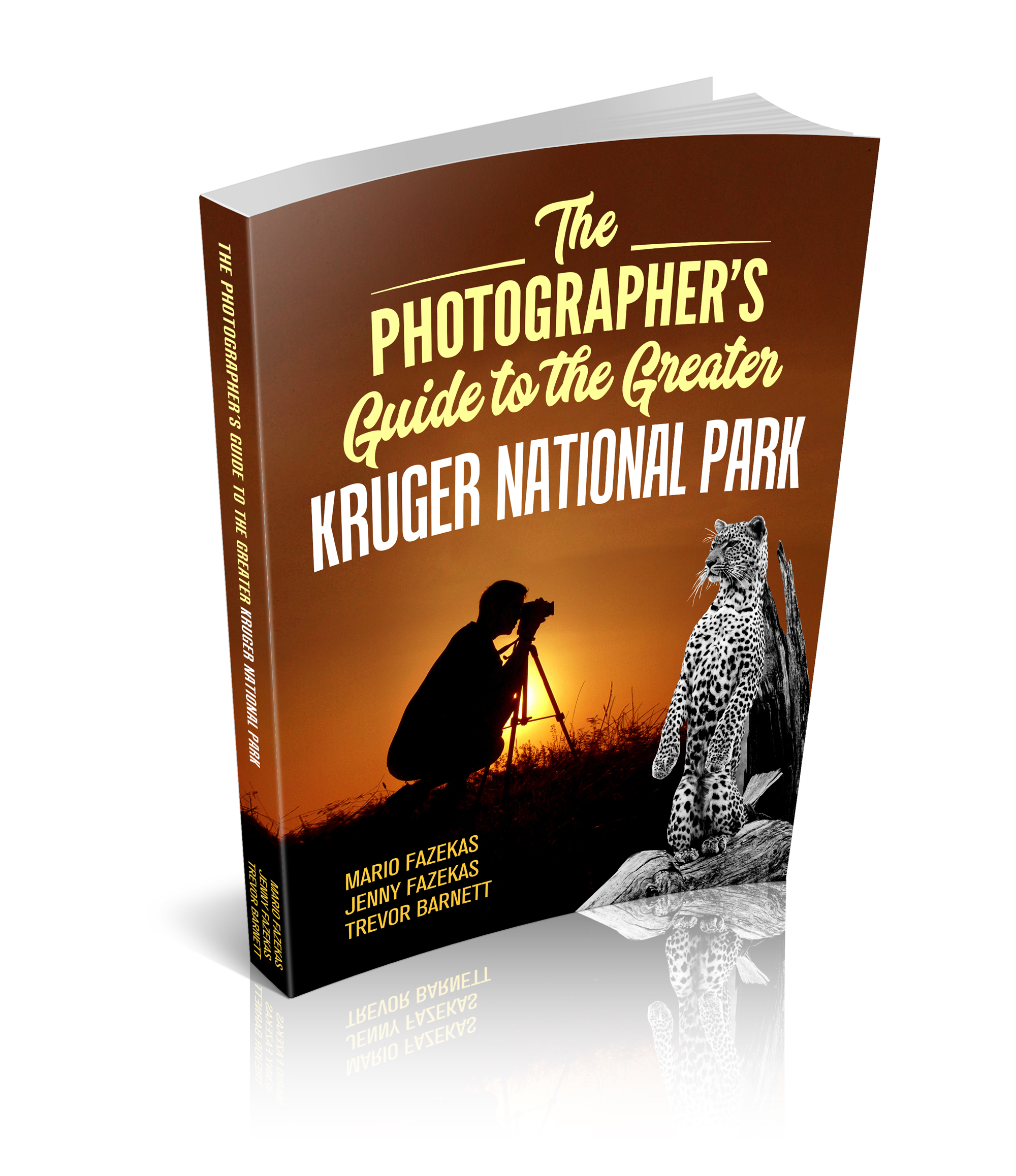
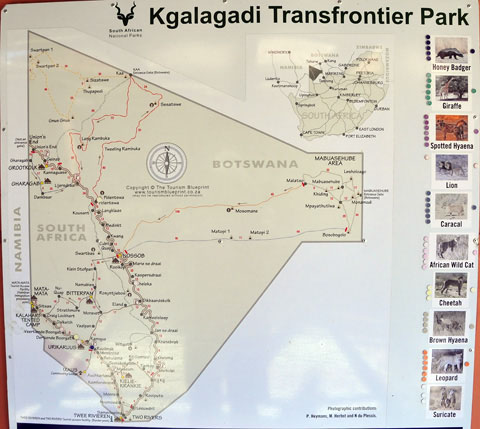
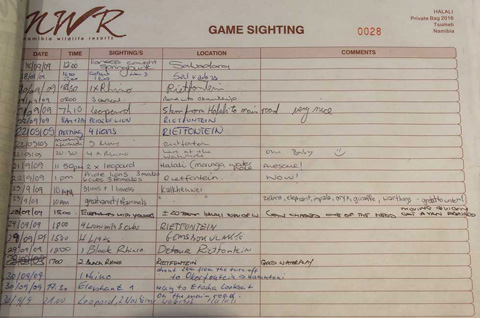













New! Comments
Have your say about what you just read! Please leave us a comment in the box below.